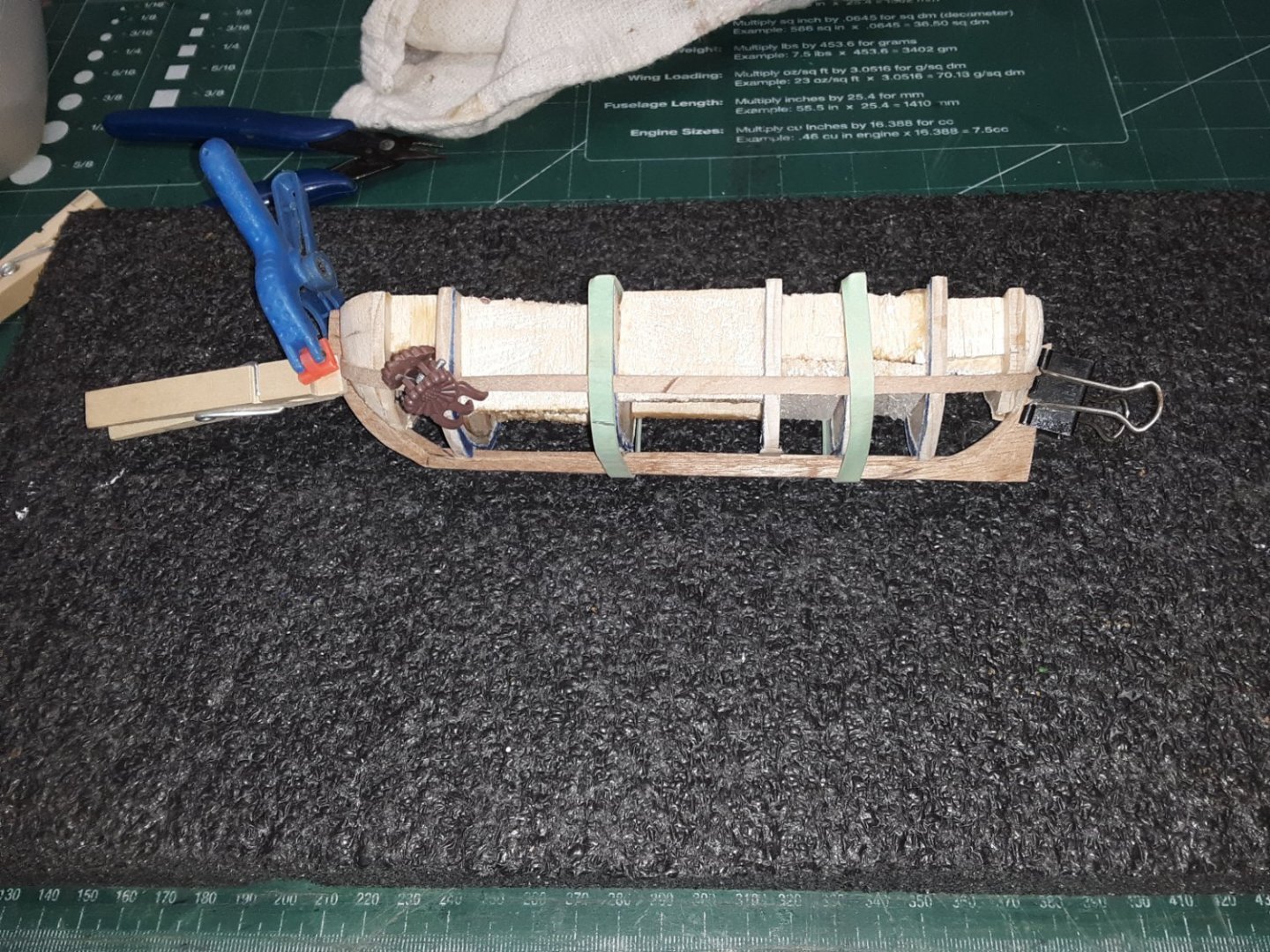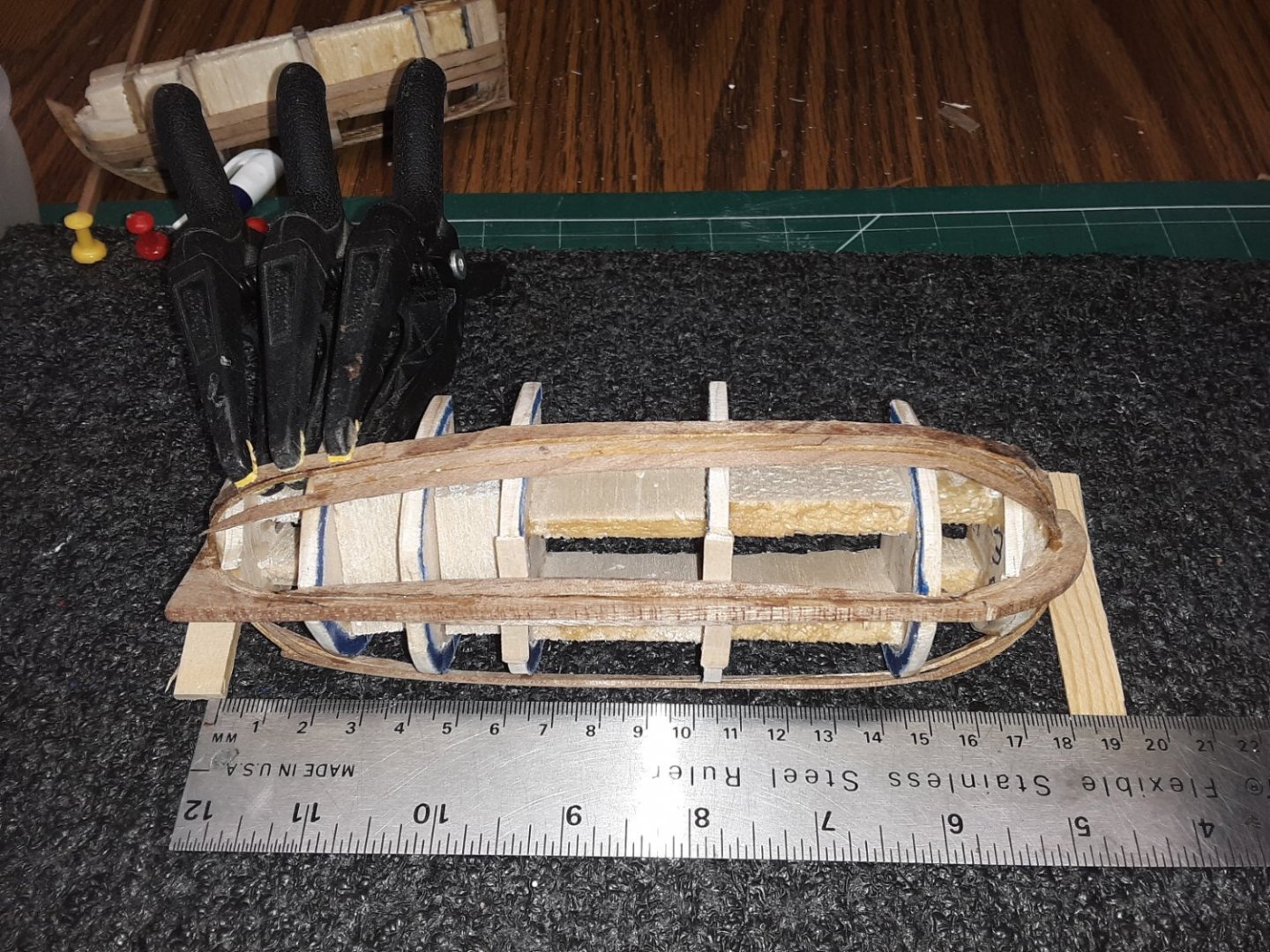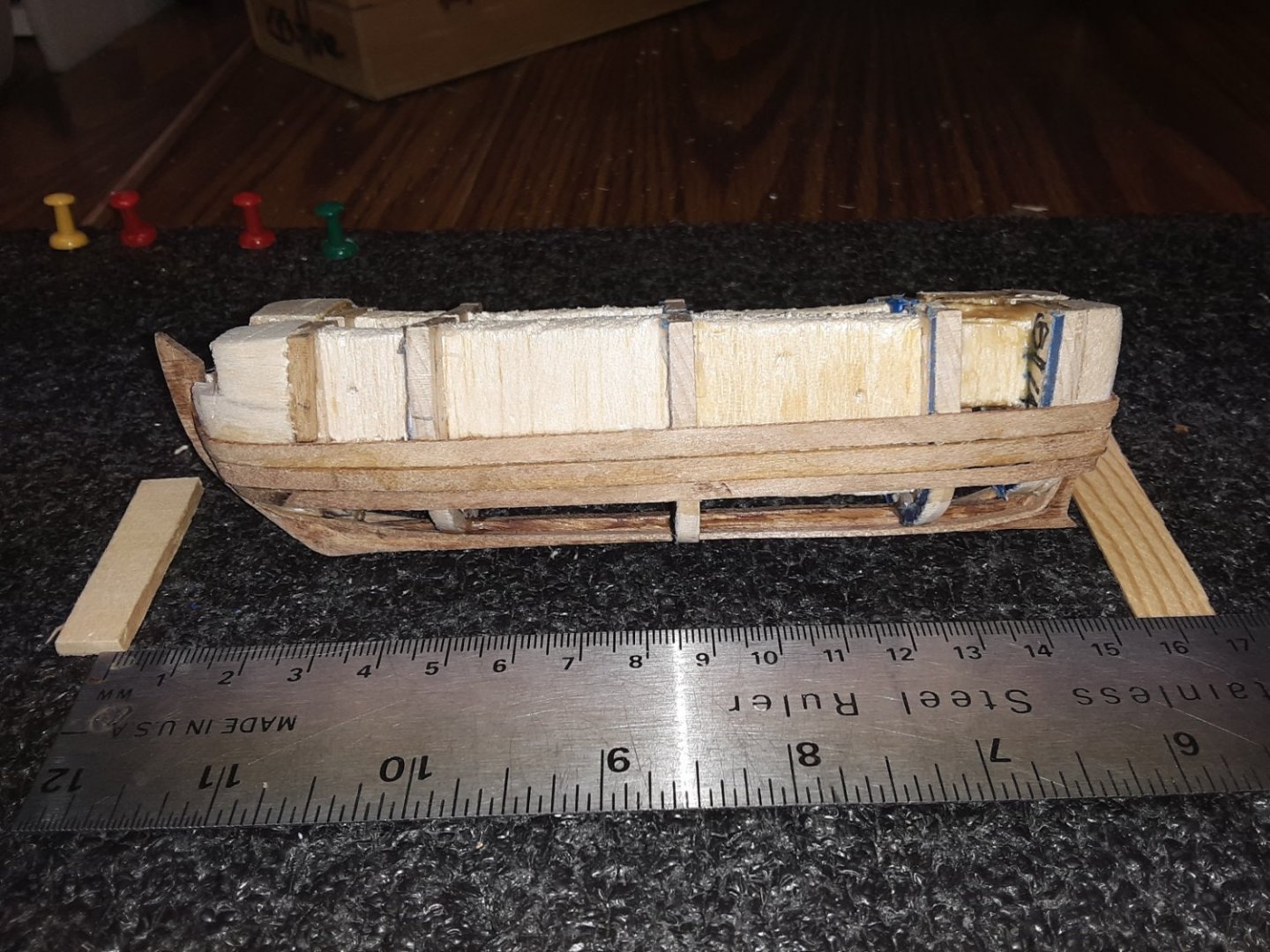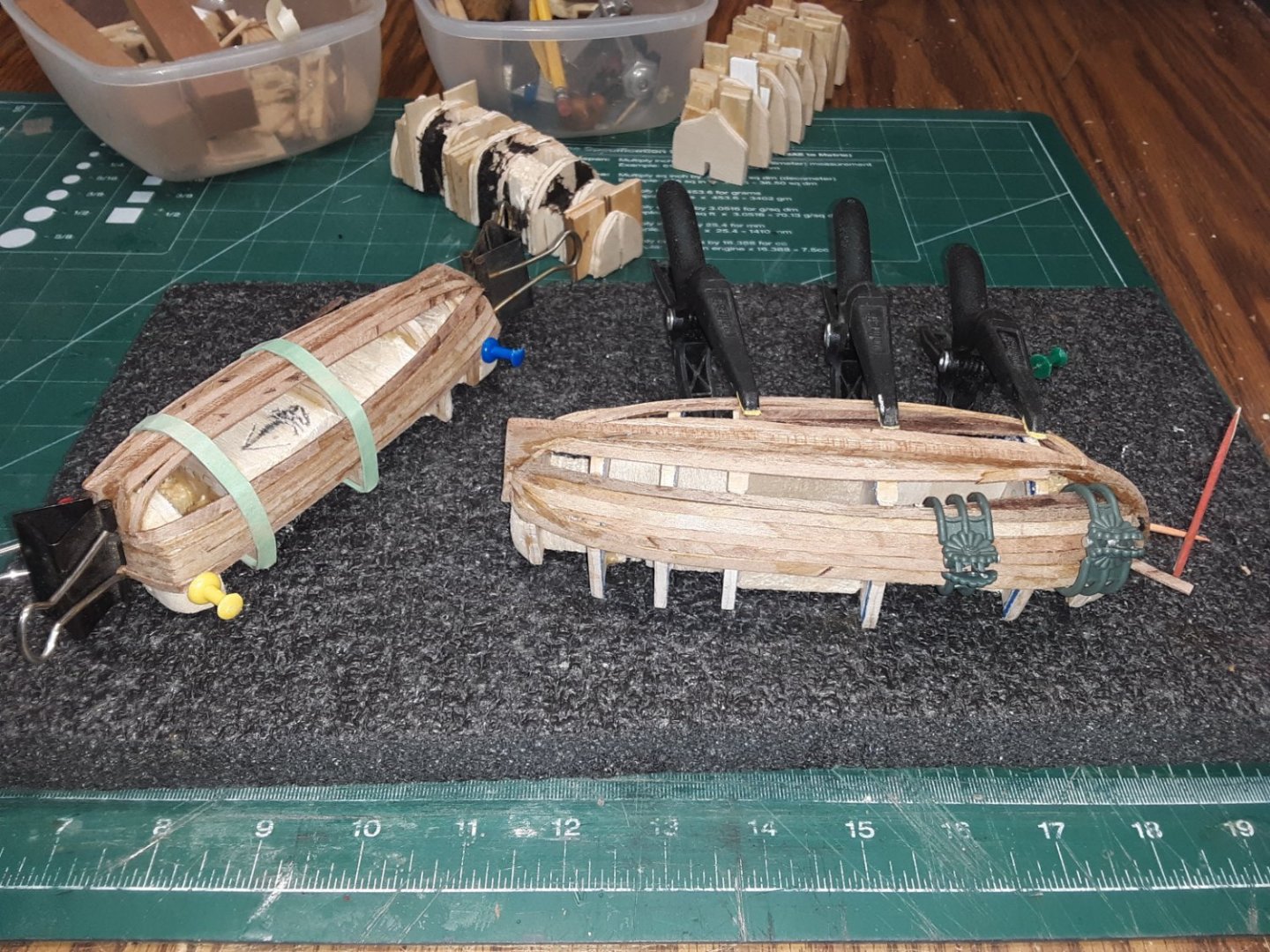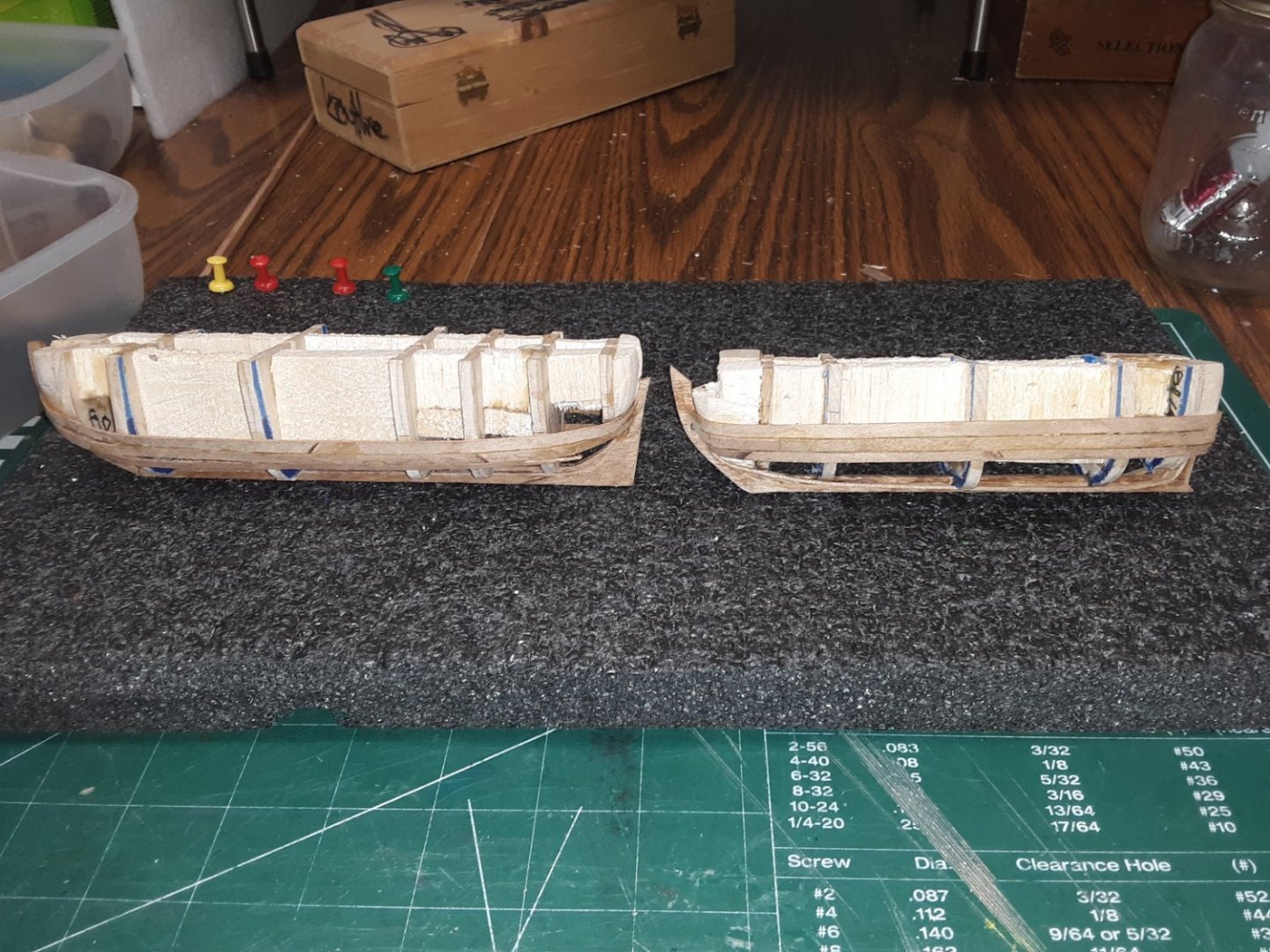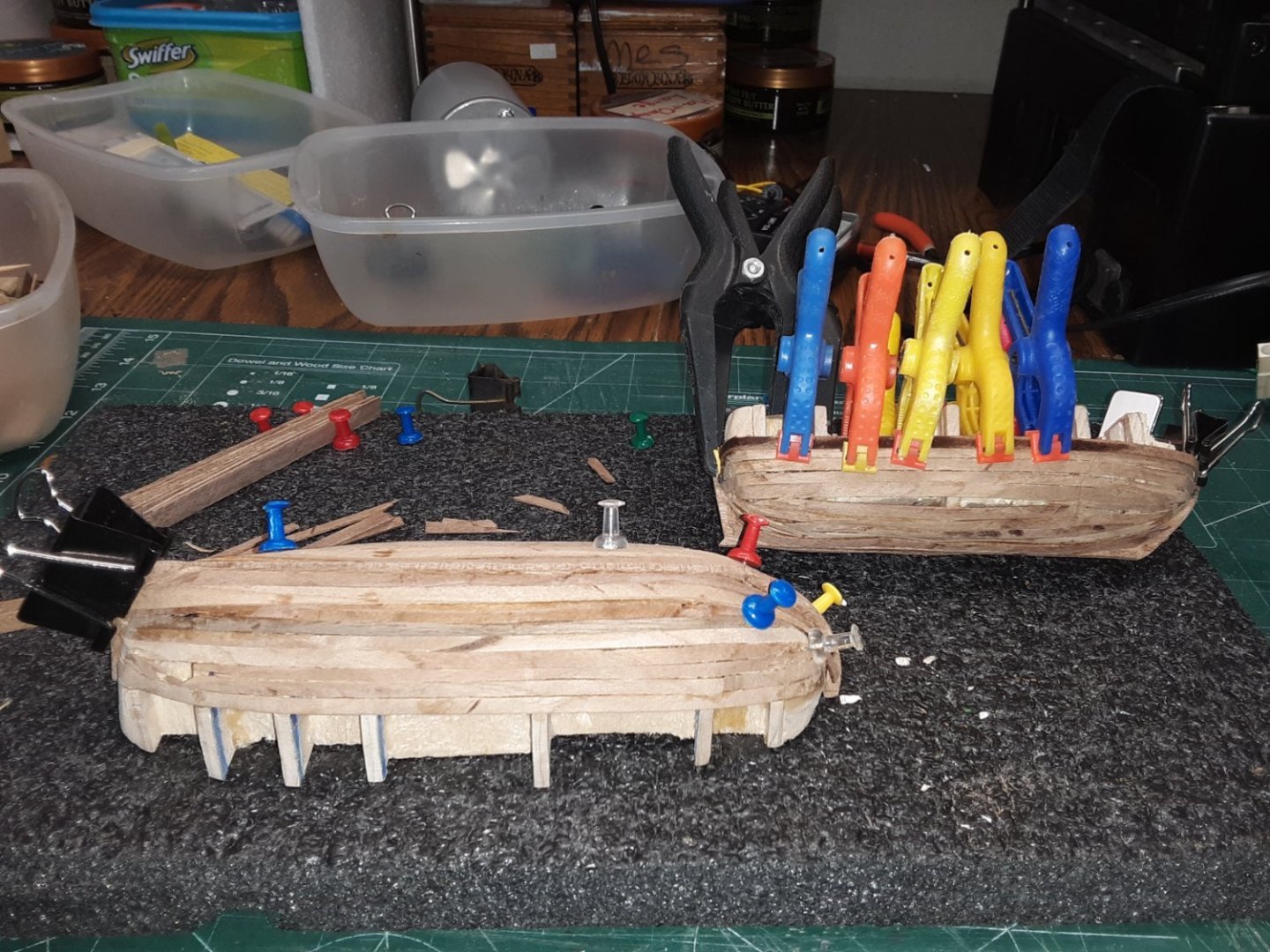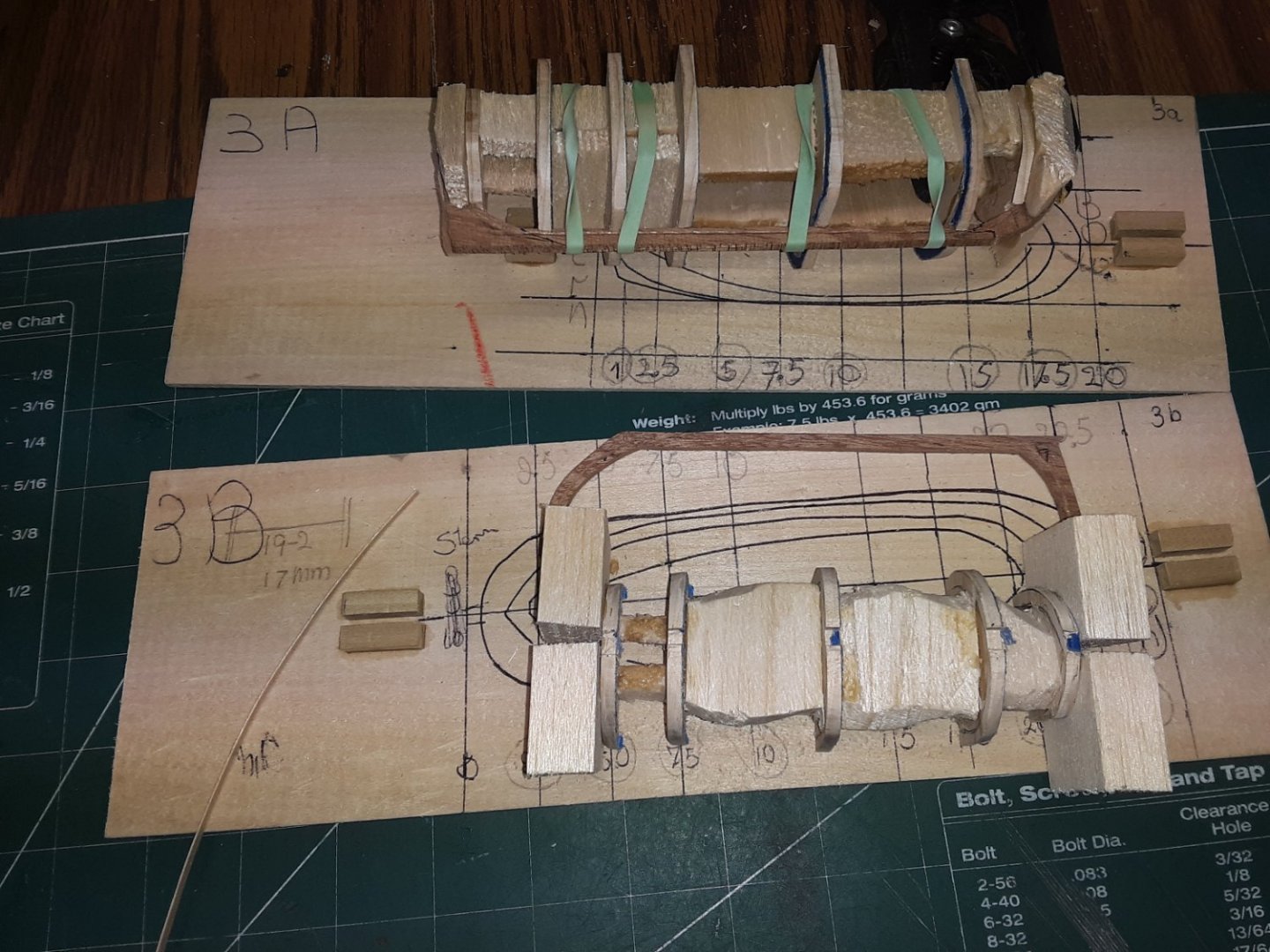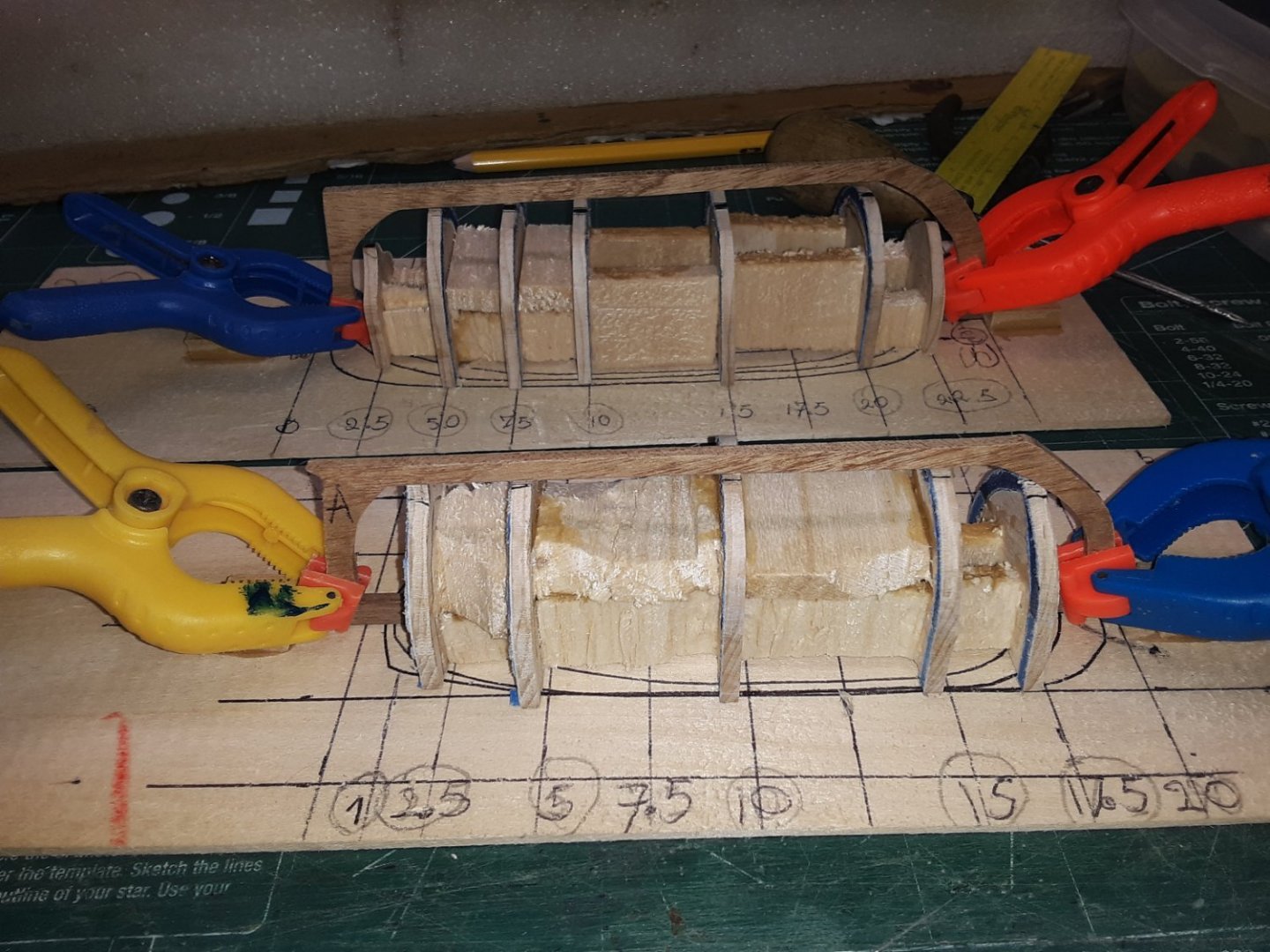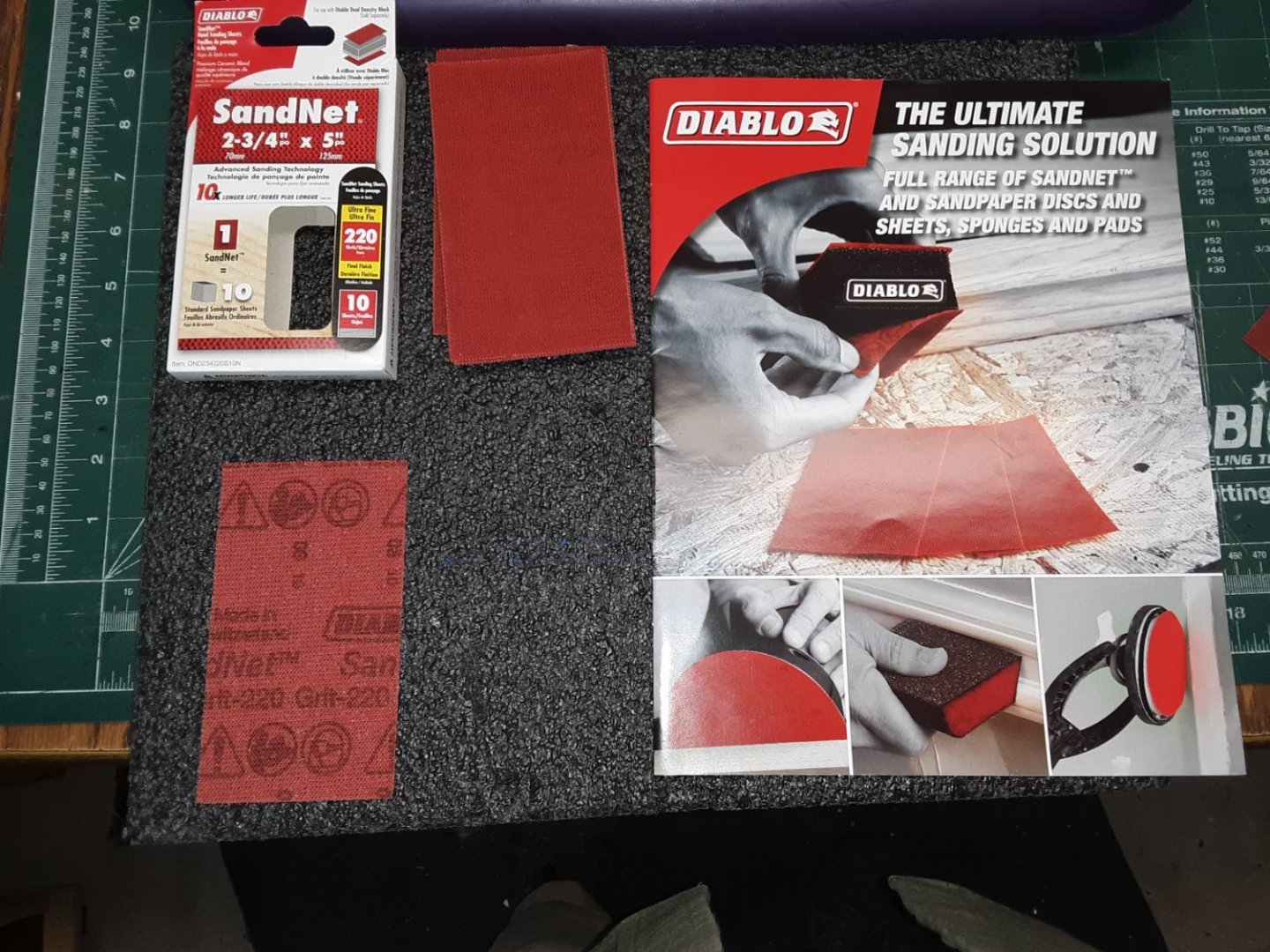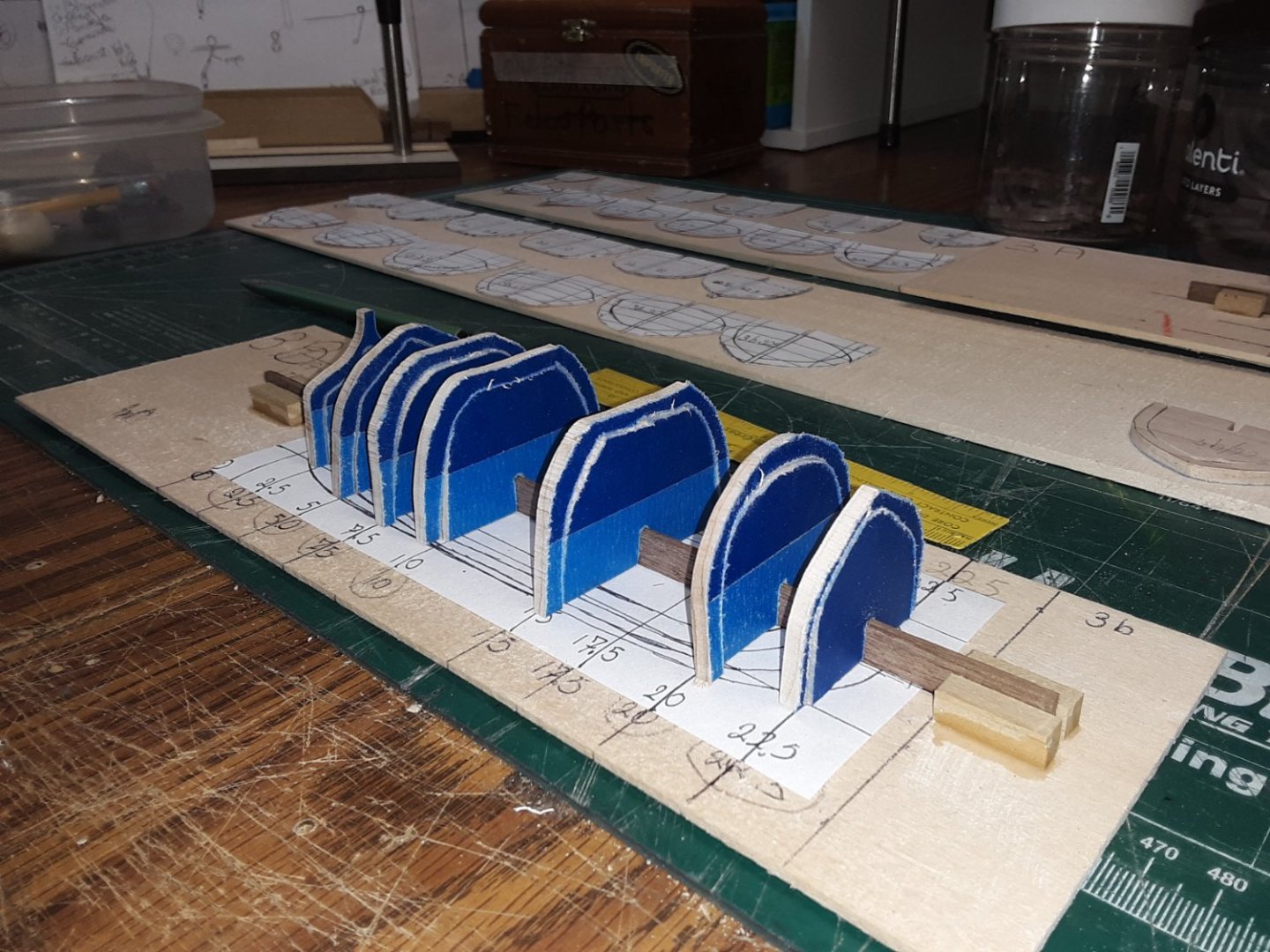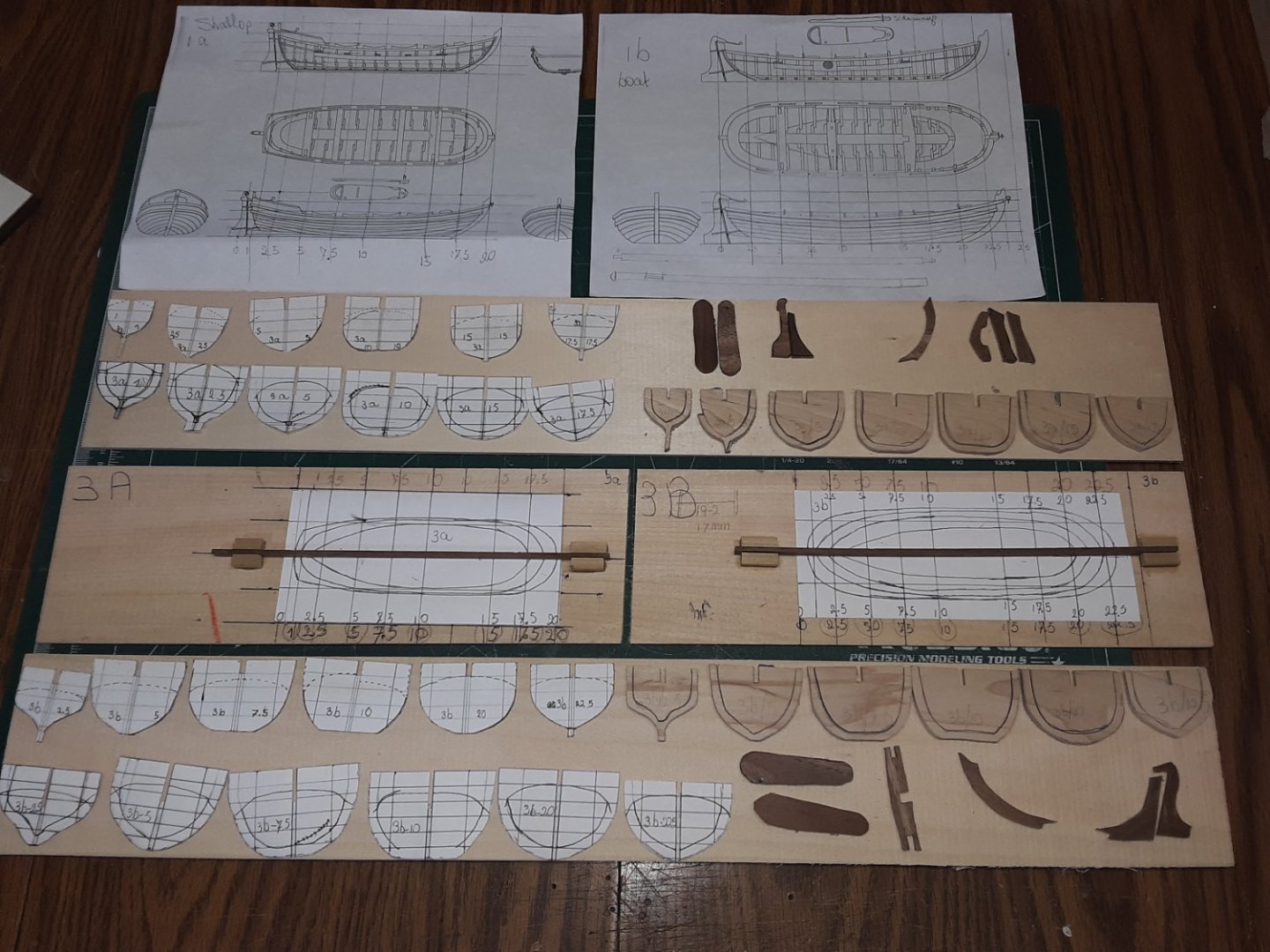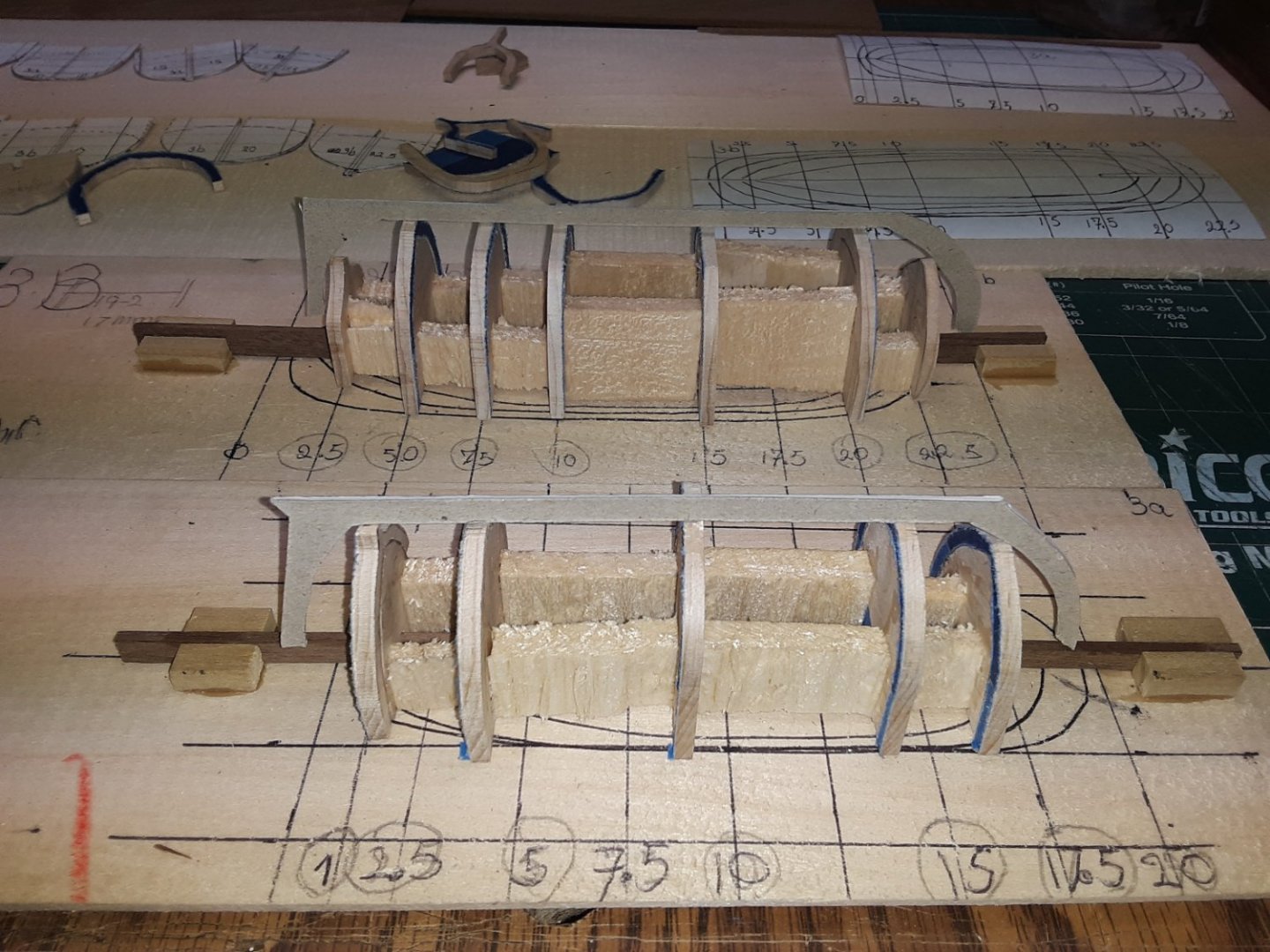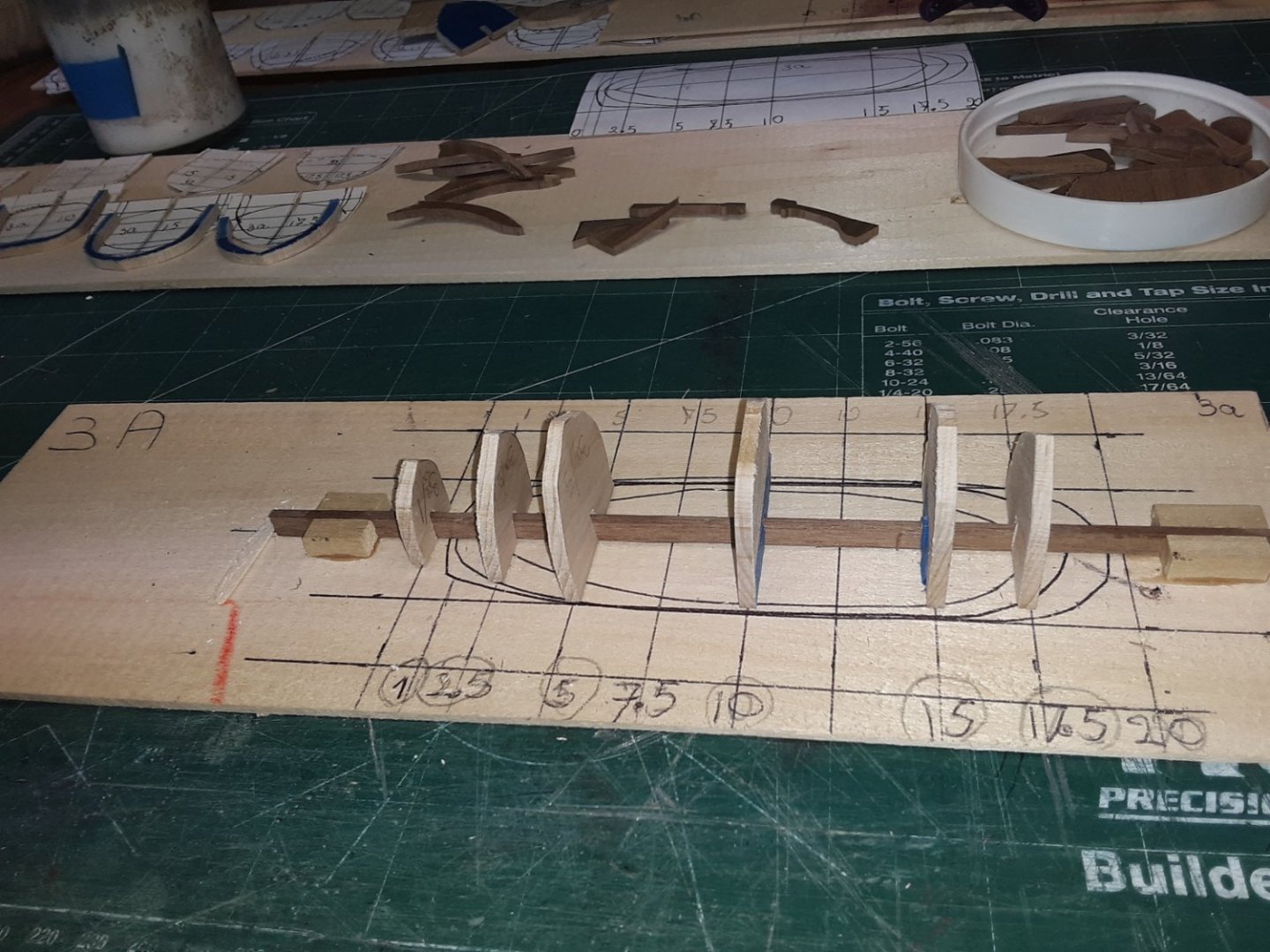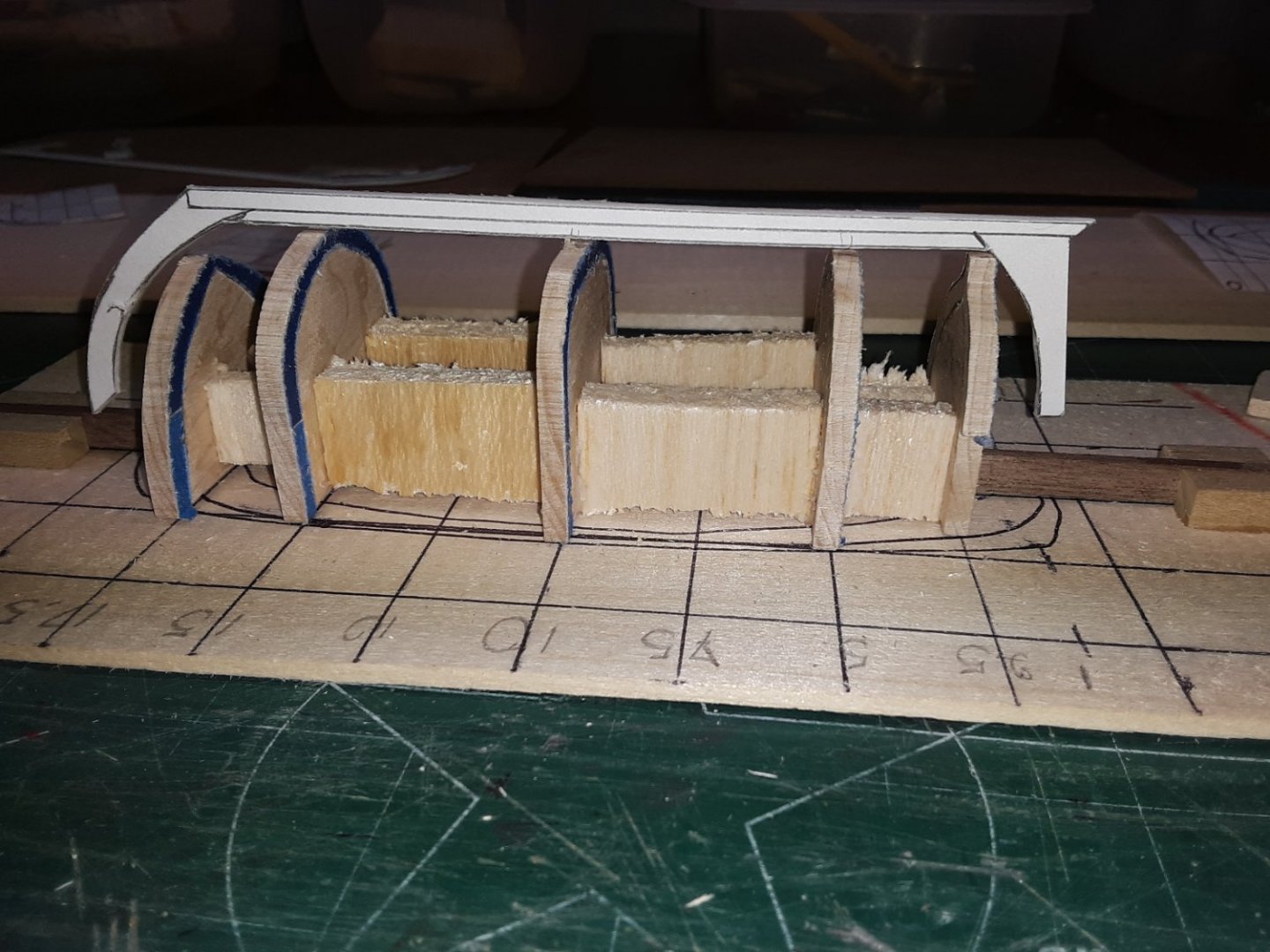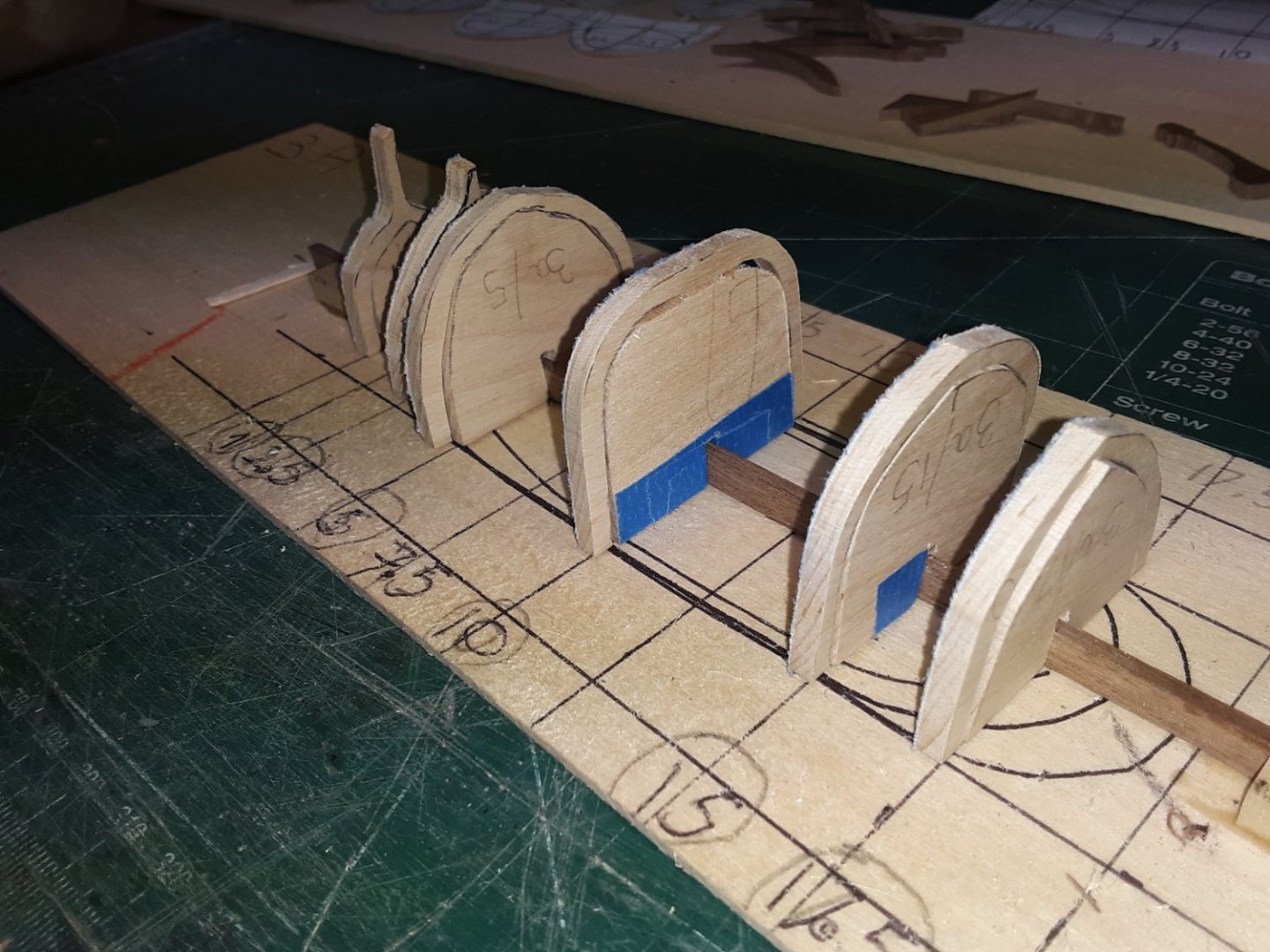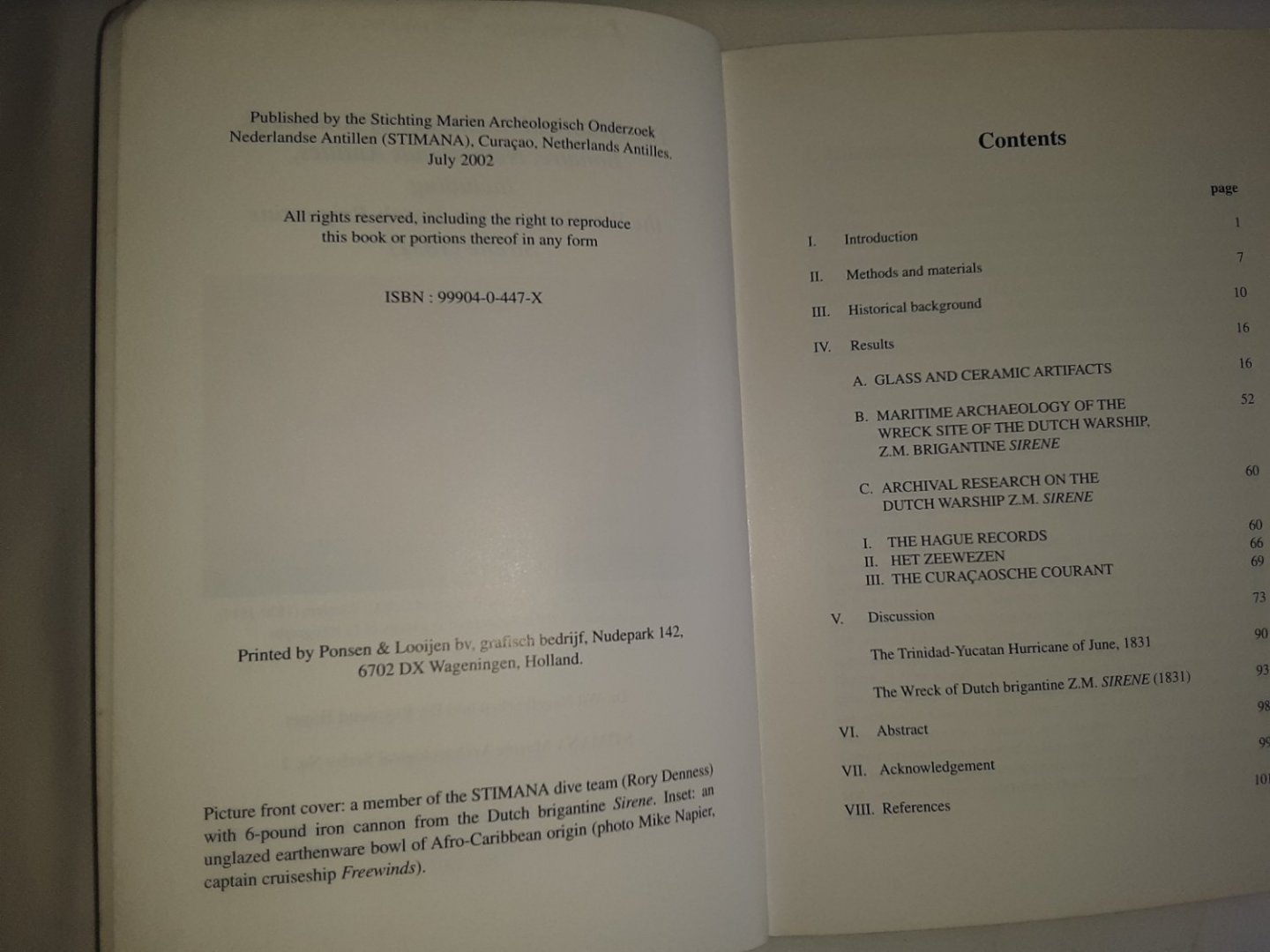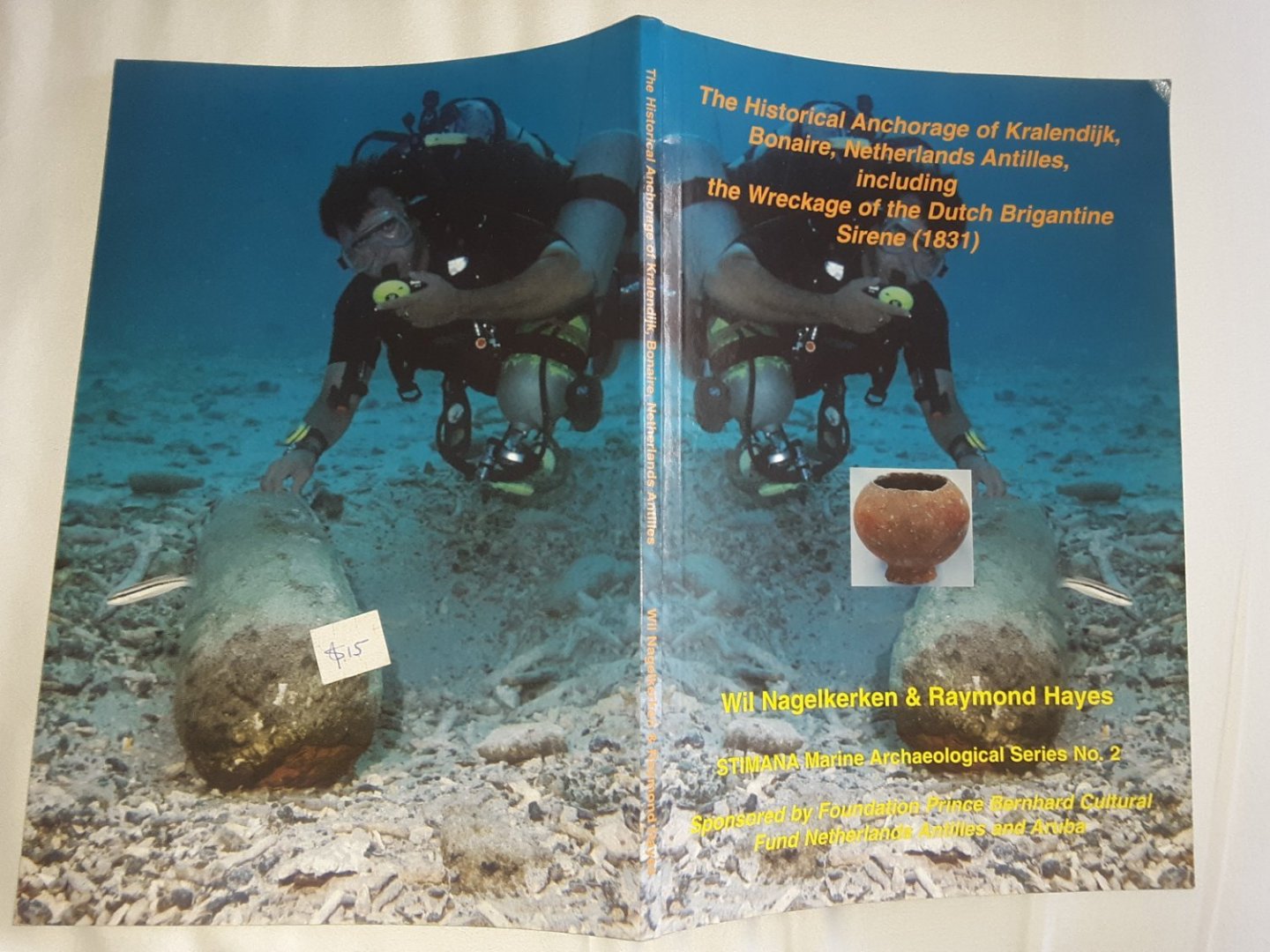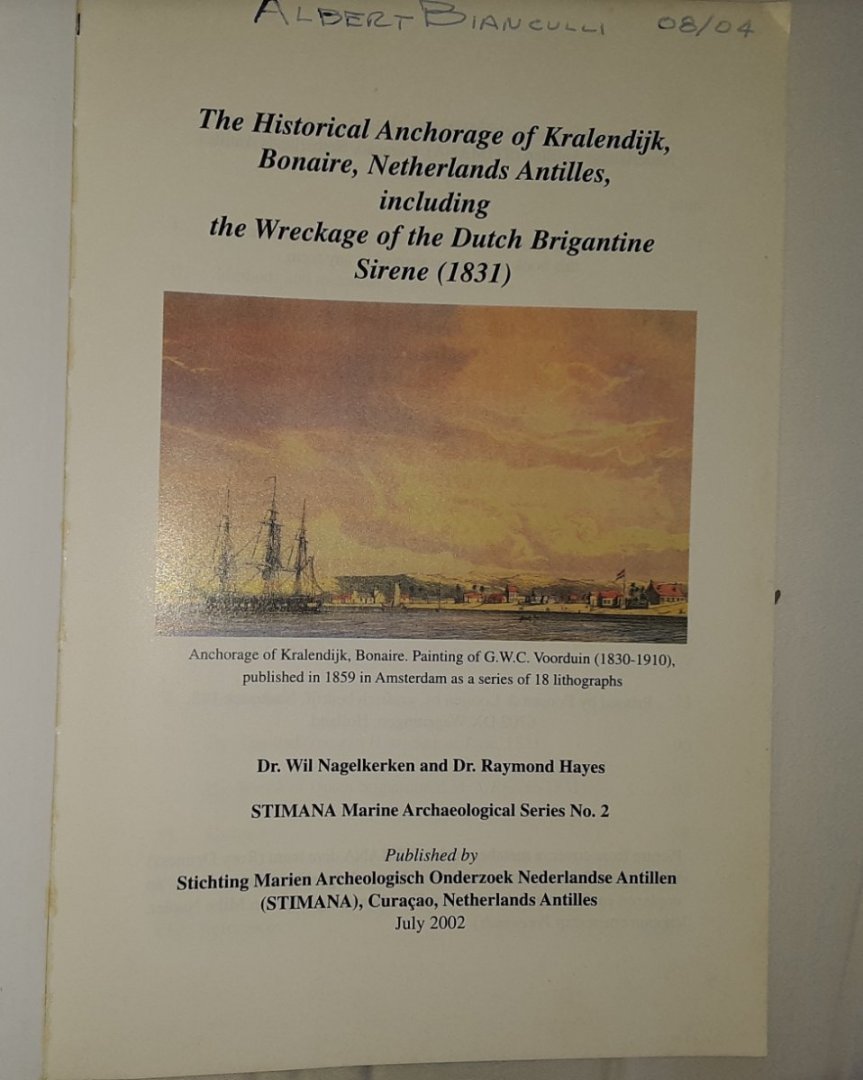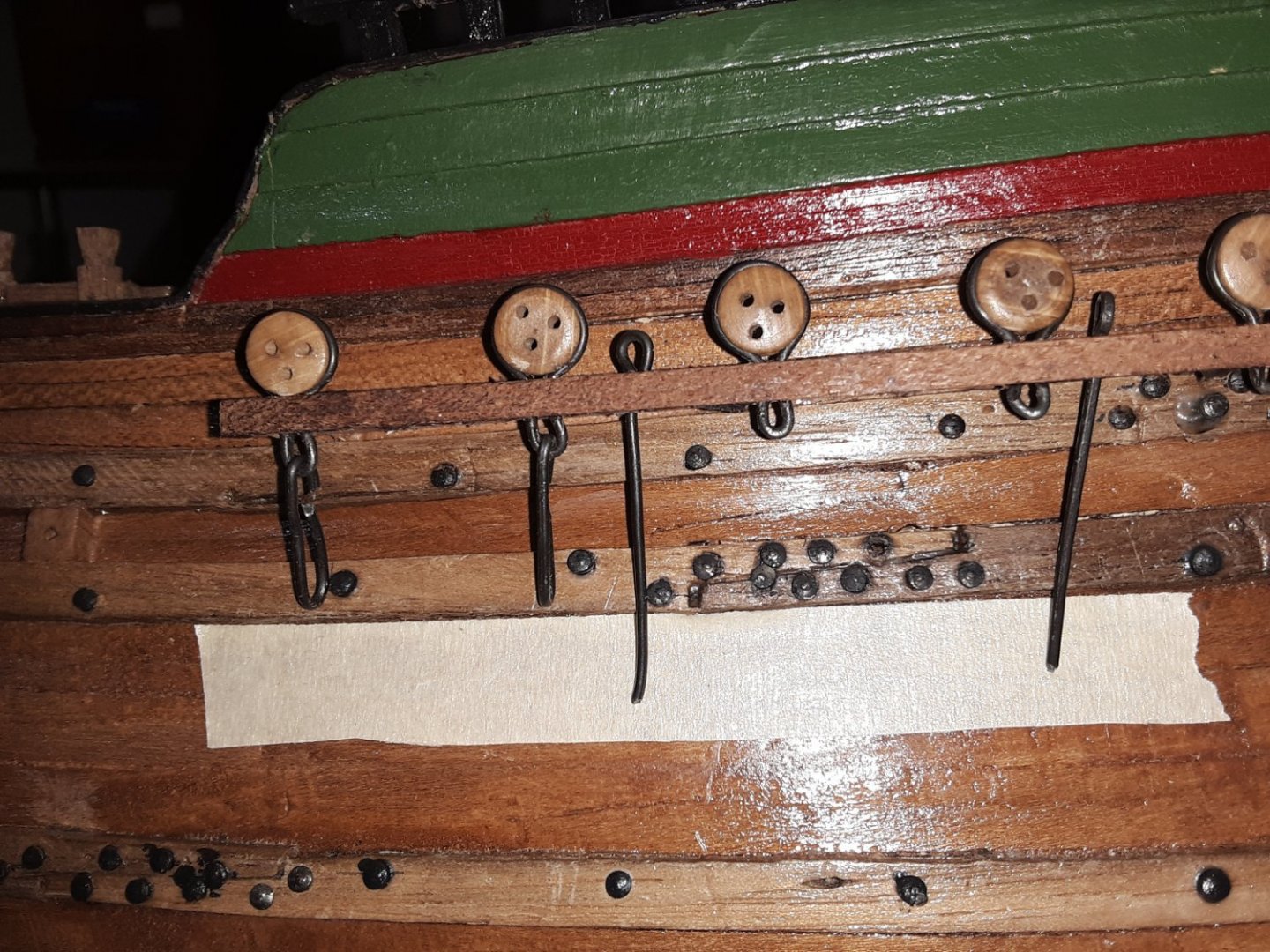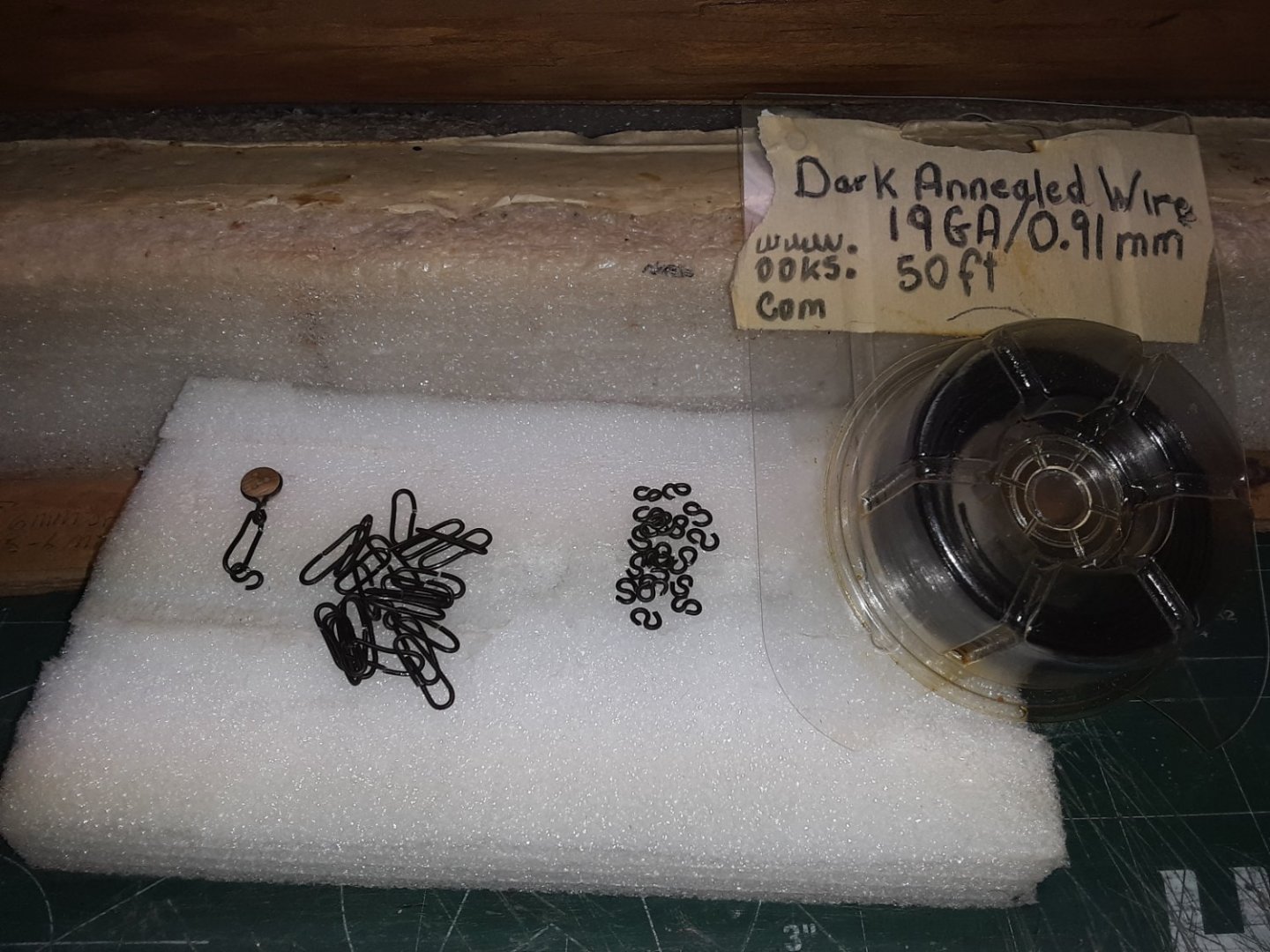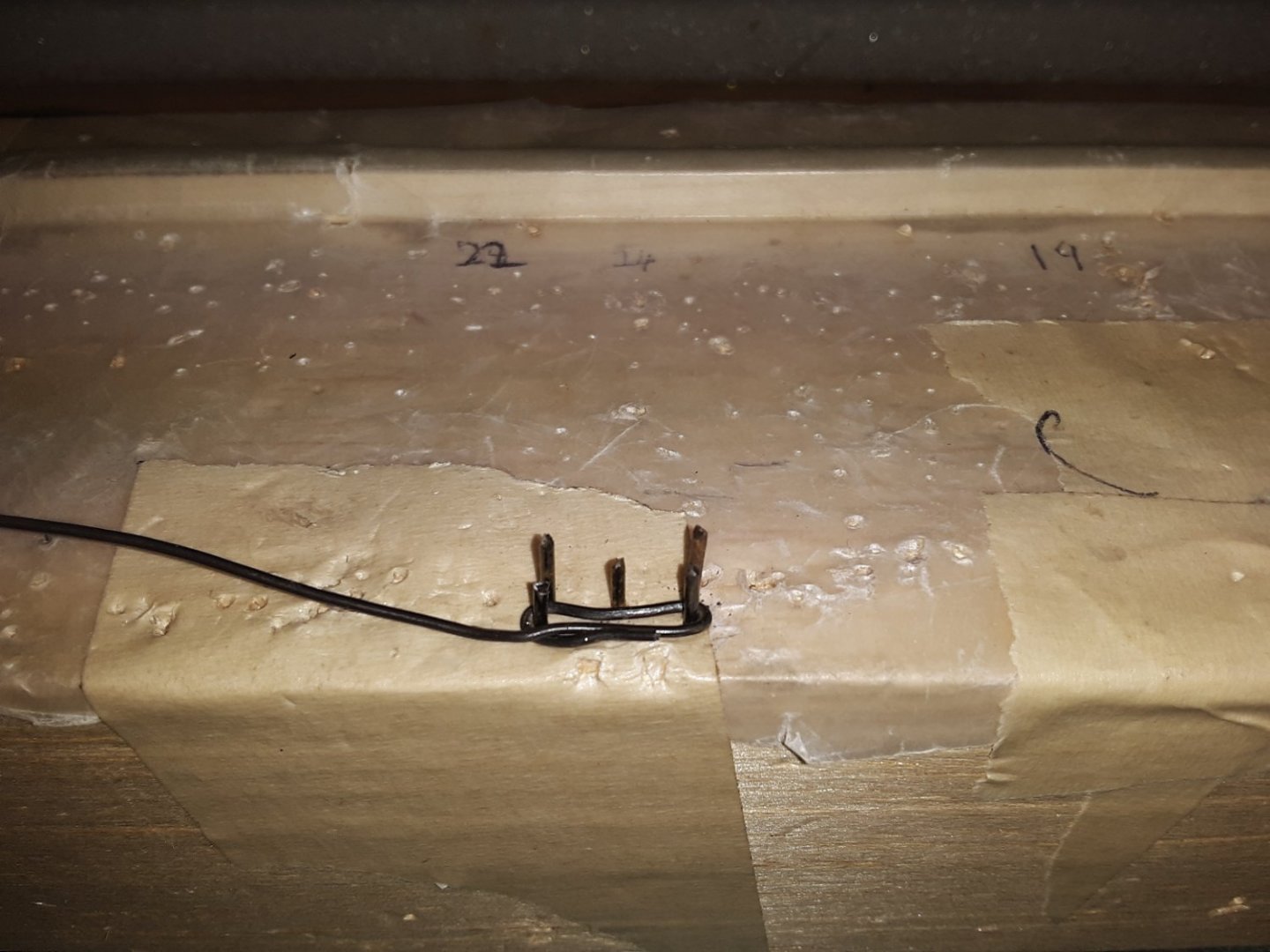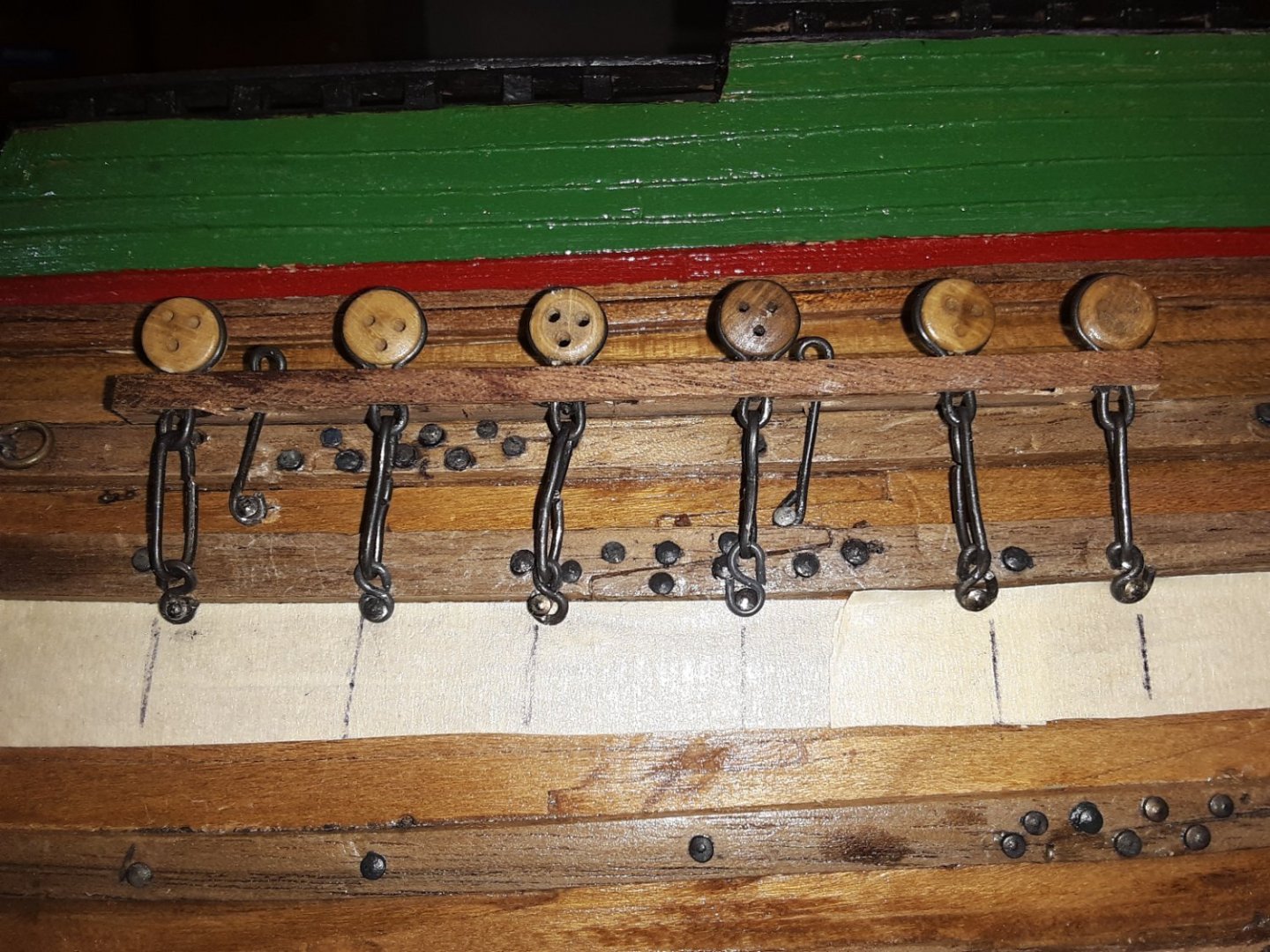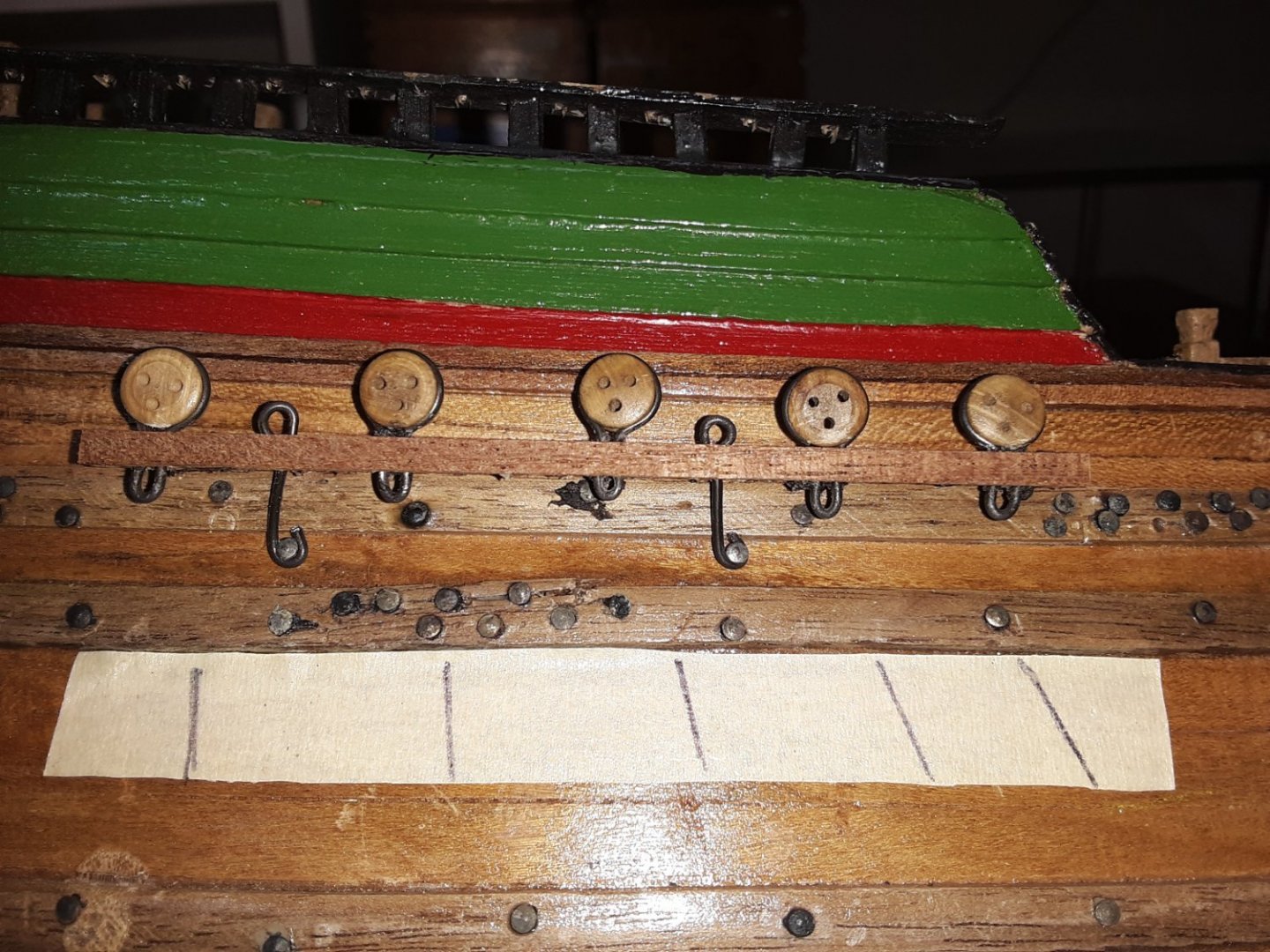-
Posts
1,718 -
Joined
-
Last visited
Content Type
Profiles
Forums
Gallery
Events
Everything posted by flying_dutchman2
-

Technical drawings & Dutch shell first
flying_dutchman2 replied to Jules van Beek's topic in Nautical/Naval History
Jules, I second that from @druxey, is there a thesis or dissertation on the above information? If so, I would love to read it. I would also like to see the biography list of all the references you are using as you have some interesting articles that I have not heard of before. Thanks, Marcus -

Technical drawings & Dutch shell first
flying_dutchman2 replied to Jules van Beek's topic in Nautical/Naval History
This is a fascinating topic and I have been reading this thoroughly. It also gives me a better understanding of it all (Thank you Jules). I use Witsen's manuscript and Hoving's book which is an interpretation of Witsen's manuscript plus several other books to attempt to either built another Fluit (First I need to finish the Zeehaen), or the war yacht, the Heemskerck. Marcus -

Technical drawings & Dutch shell first
flying_dutchman2 replied to Jules van Beek's topic in Nautical/Naval History
Hallo Jues, The following link are from two Dutch model builders that are building models "shell first". They are both very interesting threads to follow. Winter's Hollandse tweedekker 1/75 POF bouw door Stephan Kertész | ModelbouwForum.nl Marcus -

The Sinking of the Bismarck ... with LEGOs ...
flying_dutchman2 replied to uss frolick's topic in Nautical/Naval History
Thanks for posting. It is amazing how this was done and the work that went into this. I like how all the figures were swimming a backstroke when the ship went down. Marcus -

Drafting
flying_dutchman2 replied to mangulator63's topic in CAD and 3D Modelling/Drafting Plans with Software
@mangulator63 "I'm just curious, does anyone still sit at a drafting board and design and draw anymore?" Yes, I do. I still have my drafting table and Rotring pens (from 1978 when I studied landscape Architecture at the Horticulture College in the Netherlands) and still use them. My present built went from 1:75 to 1:37.5. I have a fast pc with TurboCAD installed on it. But firing that up and scanning in the plans, blowing that up to twice the size, printing them all, and then taping that all together takes much longer then cutting a piece of velum from a 5 ft wide 100 ft long roll. Measure by hand the dimensions on the original plans and transcribe them on the 1:37.5. Marc -
After reading with much interest, this has been very educational. Philemon1948 "Is this true? Were drawings not used before they started building a ship in the seventeenth century?" The Dutch were well known for not putting anything on paper. The master shipwright had it all in his head and they taught the younger shipwright and he taught it to the next on and so on. Nothing on paper so when you read through books lets say the book "17th Century Dutch Merchant Ships by Ab Hoving and Cor Emke" , drawings/plans are from paintings, edgings, maritime archeological excavations and contracts from Witsen and other authors. Nothing like "we got plans from this and that. Unlike other Western European nations that put everything on paper and some of this has survived to this day. This makes it more difficult for the present model ship builder to built a model because it never is exact. Reading through these 2 books I have mastered the art of reading and understanding contracts. It did take several years and help from Ab Hoving. – A. Hoving, A. Lemmers, In tekening gebracht. De achttiende-eeuwse scheepsbouwers en hun ontwerpmetoden, 2001, – A. Hoving, Nicolaes Witsen and Shipbuilding in the Dutch Golden Age, 2012. I figured if I master understanding contracts I can built any Dutch Ship. Philemon1948 "The flute and the pinas represent two different ship types although they tend to have many features in common". On the site of De VOCsite : Scheepstypen van de VOC it discusses a "Hekboot", which is the best of both worlds. The bottom part of the ship is a Fluit and the top part is a Pinas. Dutch quote "Het is een soort mengvorm met als onderschip de kenmerken van een fluit en de bovenbouw van een pinas". Just my 2 cents. Marcus
-

17th century Dutch East India Company Shipbuilding
flying_dutchman2 replied to bruce d's topic in Nautical/Naval History
I have the book and it is a great addition to my library. It has helped me with building my Dutch ships. My interest in building Dutch ships is the method and technique the Dutch used. Ab Hoving has written a good book about this and he has several articles on this as well. Marcus -
As a frugal Dutchman, I have been making them for the last couple of years (I make almost everything myself, about 95%). I take a round dowel, clamp it, on a drill press put in 3 holes in a triangle. Use my crude home made lathe and put the dowel in the chuck from the drill and use an abrassive cord to make the groove. Cut off the deadeye a bit wider and sand both sides a bit round. As someone already said, if you only need a few, you can purchase them from any online store. Marcus
-
@Meriadoc Brandybuck Large boat 18cm long x 6cm wide x 2cm high. Small boat 15cm long x 4.5cm wide x 2cm high. Planking on small boat 3mm wide x 1mm thick. On large boat 4mm wide x 1mm thick. The spilling is difficult on these boats. But I am trying that. Covering the boats with canvas is an option but then everything is hidden and wasn't really done around that time. Marcus
- 318 replies
-
- fluit
- abel tasman
-
(and 2 more)
Tagged with:
-
Thanks for all the likes, suggestions and comments. Between the little vacations, the flower and the edible garden I find time to work on the small boats. I have the most difficulties with the smaller boat. The shape is a tough one. I decided to build both boats with 2 layers of planking as I made many mistakes planking the small one. (I don't know how people work in scales of 200 and up, mind boggling). Both have the first layer of planking completed and have started on the second layer which should hide the mistakes I made on the smaller boat. It is good that the smaller boat goes into the bigger boat and when I add 2 masts, 4 sails and the rigging you don't see much of the smaller boat. I am not sure if I am going to add the mast, sails and rigging to the boats. This may look like someone left a pile of junk on the deck and forgot to clean up. What are the suggestions? Marcus
- 318 replies
-
- fluit
- abel tasman
-
(and 2 more)
Tagged with:
-
Impressive. I like how you made the blocks and your sails. Marcus
- 756 replies
-
- galleon
- golden hind
-
(and 2 more)
Tagged with:
-

Can't Find Thin Brass Strips
flying_dutchman2 replied to mikiek's topic in Metal Work, Soldering and Metal Fittings
I purchase most of my K&S strips of brass and copper which are wider than 1/2" or get the 4" wide sheets. They are always in stock somewhere and reasonably priced. When I just need one or two thin and narrow strip of brass I dont use the tablesaw. Instead I cut it with a #2 Xacto blade. This is what I do. I get a sheet which has the thickness I need for the project. Then I measure the width I need and do that several times just to make sure. I use a pencil and draw a line so I know the width. I clamp a metal ruler where the edge of the ruler is on the pencil line. (I clamp everything to the edge of the table). I insert a new #2 Xacto blade in the holder, and press on the blade and slowly cut the metal from left to right and right to left. This process is slow going but it works and the thin strip does not curl. Marcus -
2 small boats. I have tried out several methods as well as what is described in the book of Mondfeld. I saw on the Dutch modelbouwforum.nl a method that I am using. It has been challenging. Lots of trail and errors. I find it about as difficult as building the hull of the model itself. My woodworkers club had reps. from Diablo and Freud. The Diablo rep showed us a new type of sanding technology. It is a net made of a ceramic blend and does not clog or tear. It lasts longer that regular sandpaper and made in Switzerland. Personally, it works great, better than anything I have used before. The 220 grit I use feels like the 100 grit regular sandpaper. Marcus
- 318 replies
-
- fluit
- abel tasman
-
(and 2 more)
Tagged with:
-
Thanks for all the likes, suggestions and comments. Now that my wife has retired I have less time to work on the Fluit. Went on vacation to Bonaire, Netherlands Antilles. Snorkeling, sailing and checking out the island. There is only one shipwreck, the Dutch Brigantine Sirene from 1831. We are doing a major house cleaning and donating many items to Salvation Army, Goodwill, etc. I worked on the deadeyes and the necessary iron work that goes with it. The tape with the lines under the wale show the angle of the iron work. Marcus
- 318 replies
-
- fluit
- abel tasman
-
(and 2 more)
Tagged with:
-

Can't Find Thin Brass Strips
flying_dutchman2 replied to mikiek's topic in Metal Work, Soldering and Metal Fittings
Check the following sites. It is where I get narrow brass strips. I go to K&S Metal site and check the SKU number of what i need. Than you can either do a Google search with that number and manufacturer. Example: "Flat Bars Brass 2Pcs 1/64 x 3/32, sku 815021" Or go to the below sites and compare prices. hobbylinc.com onlinemetals.com zoro.com micromark.com Marcus -
I've read some books on Shackleton and when I read about the discovery of the Endurance I thought "Cool" what a find. Marcus
-

Ducati 1299 by Moonbug - Pocher - 1/4 Scale
flying_dutchman2 replied to Moonbug's topic in Non-ship/categorised builds
I agree with @popeye the sailor on this, too expensive for my budget. Marcus -

Ducati 1299 by Moonbug - Pocher - 1/4 Scale
flying_dutchman2 replied to Moonbug's topic in Non-ship/categorised builds
WOW, never heard of the name. As I like building my ships in a large scale I am going to look into this. I would not have any room for displayi like the Ducati. Make them R/C would be cool. Marcus
About us
Modelshipworld - Advancing Ship Modeling through Research
SSL Secured
Your security is important for us so this Website is SSL-Secured
NRG Mailing Address
Nautical Research Guild
237 South Lincoln Street
Westmont IL, 60559-1917
Model Ship World ® and the MSW logo are Registered Trademarks, and belong to the Nautical Research Guild (United States Patent and Trademark Office: No. 6,929,264 & No. 6,929,274, registered Dec. 20, 2022)
Helpful Links
About the NRG
If you enjoy building ship models that are historically accurate as well as beautiful, then The Nautical Research Guild (NRG) is just right for you.
The Guild is a non-profit educational organization whose mission is to “Advance Ship Modeling Through Research”. We provide support to our members in their efforts to raise the quality of their model ships.
The Nautical Research Guild has published our world-renowned quarterly magazine, The Nautical Research Journal, since 1955. The pages of the Journal are full of articles by accomplished ship modelers who show you how they create those exquisite details on their models, and by maritime historians who show you the correct details to build. The Journal is available in both print and digital editions. Go to the NRG web site (www.thenrg.org) to download a complimentary digital copy of the Journal. The NRG also publishes plan sets, books and compilations of back issues of the Journal and the former Ships in Scale and Model Ship Builder magazines.




